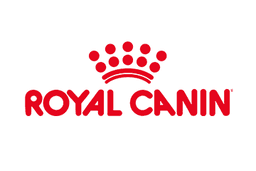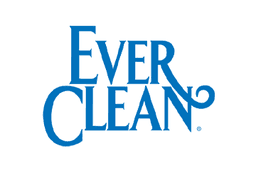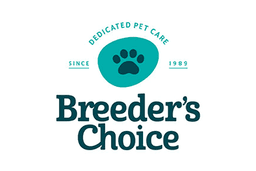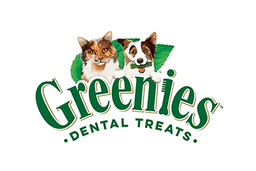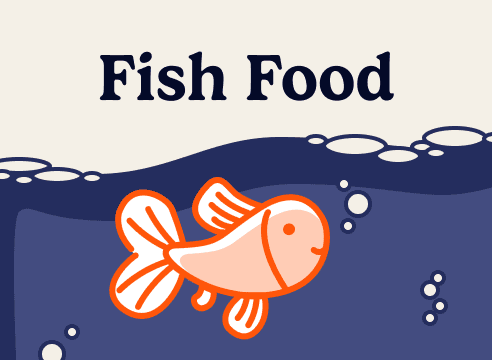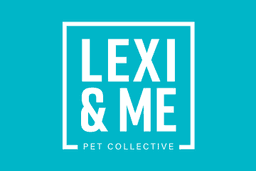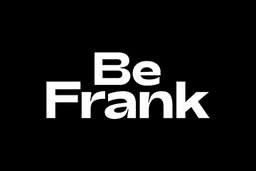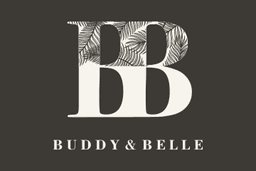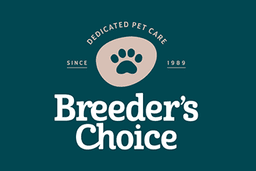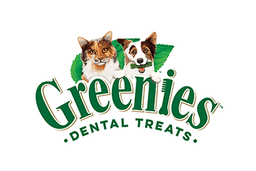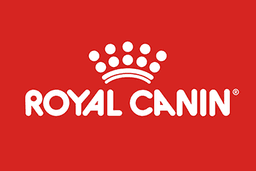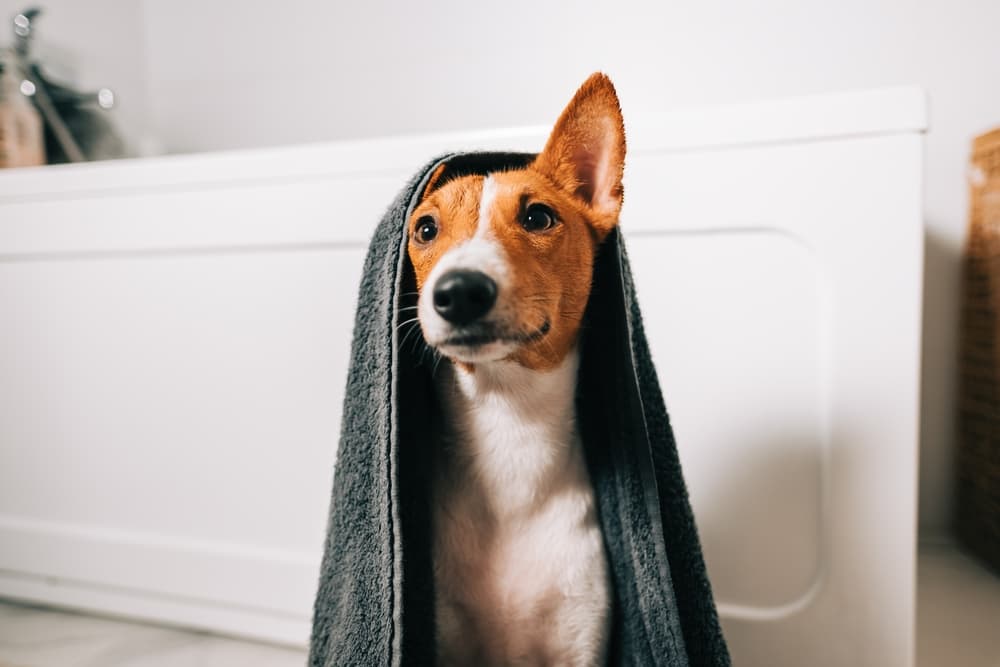Pamper your pooch: How to throw a doggie day spa – at home
We’re sure you dream about relaxing in a spa bath, slowly turning into a prune. But we’d guess it’s not your precious pooch’s favourite frivolity!
Fair enough, really. We wouldn’t want someone forcibly drenching us in soapy suds and wiping our behinds either…
But a little pampering at home can do your pup a whole lotta good.
Not only is it good for their hygiene, health and hairdo, it’s also the paw-fect time for you both to bond.
Read on to learn how to make your furry (and perhaps filthy) friend feel oh-so fabulous!
Let your dog zoomie, before you groomie
The last thing you want is a wriggly dog anywhere near water. You will get drenched. And that will not stop them.
So get all their nervous energy out with a quick trot around the block, or a couple of doggy-lympics training laps around the backyard.
Put your pup’s paws up – it’s time to relax
You’ll now have a slightly less active animal on your hands. But they could still have a few wiggles left in them. So what can you do to calm your canine?
Treat your furry friend to a doggy date – and amp up the ambiance. That means dimming the lights, playing some calming music – even lighting a nice-smelling candle! (Okay, perhaps that’s a little much!)
Essentially, you’ll need to create an environment without distractions. (But remember, you need to feel calm too. So why not chuck on some Norah Bones.)
Now you’ve relaxed their mind, it’s time to relax their body – with massage.
Massage relaxes your mutt’s muscles and gets them used to you handling them.
Start at the crown of their head and work your way down the neck making slow and gentle circular motions – pulling their skin and muscles away from their head. Then move to their shoulders and do the same thing.
Now, get ready to scrub a dog dog
Every dog is different. Some feel tailored to aquatic environments, while others will swiftly shake it off as soon as the first drop hits their coat. Here’s some guidance on how to prepare the perfect pamper practice for your pup.
How often should I wash my dog?
Most dogs can get away without washing for months. But as a general indicator, wash them when they start to smell (more than their usual smelly dog scent) – or when they’re visibly dirty. Although, be careful not to overdo it with the cleanliness.
Shampoo and other products can strip their skin’s natural oils – drying it out, as well as their hair.
Where should I wash my dog?
As it can get a little out of hand indoors, outdoors is the best place to clean large and boisterous hounds. Use the hose on a low pressure. It’ll clean them, and they’ll likely have a lot of fun chasing the water stream.
For most other dogs, inside is suitable. You can use a bath, sink or special dog bath.
What dog shampoo should I use?
Tempted to just use your own shampoo? Hair is hair, right?
Not in this case. A dog’s pH levels are very different to those in humans, so you will need a high-quality dog shampoo. Otherwise, you can dry out or irritate their skin.
If your dog has healthy skin and coat, a mild and gentle hypoallergenic shampoo will do the trick.
Otherwise, tear-less and non-irritating Hamish McBeth dog shampoo is perfect for puppies and sensitive dogs alike. If your dog has sensitive skin, always chat with your vet about the best option.
Tip: Paws before dousing your dog with detergent: First, test an almond-sized amount on their coat. Wait a moment. If their skin becomes irritated, find another product.
What about a dog conditioner – is it really necessary?
Us humans have been conditioned to reach for the conditioner after the shampoo.
But do dogs really need it? The answer is YES – if:
- You wash your dog once a month or more: Conditioner helps rebalance the moisture in their coat and skin.
- They have long hair: To avoid a knot and mat frenzy, run some conditioner through their mane. You’ll thank yourself later!
- They have itchy or allergy-prone skin: This might be occurring because you need to wash them regularly to wash allergens away. Again, it’s best to replace the moisture. Try Paw Nutriderm Conditioner to ease the itch!
What else will I need?
- Water: Go for the goldilocks approach: not-too-hot, not-too-cold, but juuuust right. Test the temperature with your elbow. And to prevent a deep-sea diving (or drowning) dog, keep the water running and draining at the same time. You may also need a ladle or a bucket to wash the suds away.
Tip: Have a water-wary dog? You can use dog wipes as a bath alternative. - Brush: Dog a tangled mess? Make sure you put a brush through their coat before you slather on the shampoo. Knotting can turn into a matting pretty fluffing quick!
- Wash cloth: Dogs are super sensitive around their heads. Afterall, that’s where their eyes, nose and ears are. So use a damp washcloth to gently clean this area.
- Towel: If you don’t want a doggy-directed water trail around your home, you’ll need to dry them off next. Use a microfibre towel to whip the water away quick smart.
- Hairdryer (use with caution): These loud and hot air creators can upset some dogs – and potentially burn them, too. But if you need to use one, choose a warm and low-pressure setting. And hold it at a safe distance, away from your hound’s head.
- Cotton balls: Dogs hate having water in their ears. So place a cotton ball in there before they jump in the tub.
- Treats: The secret to avoiding a mid-bath escapee? A bit of peanut butter on the wall next to the tub. It will also create a positive association with bath time.
Tip: Don’t be caught out: Keep everything you need nearby. Imagine what’ll happen if you have to quickly run into the other room. You and your home might get a little wet with an escapee on the loose…
Handling the hair of the dog
Okay, so your wagging friend is clean and dry. Now, let’s look at their hair situation.
Depending on the length and texture of your dog’s coat, the best way to brush and groom your pooch will differ.
But one thing’s for sure: a regular groom will keep any coat in good condition.
Why? Because a simple brush removes loose hair and prevents those dreaded mats and knots from even starting to clump together. And, as a brush distributes your pup’s natural skin oils evenly, their coat will stay extra shiny and dirt resistant (meaning fewer baths!).
What’s more? A head-to-toe groom allows airflow to your dog’s skin – preventing irritation or infection and regular brushing will also help you to pick up any lumps or sores that might need treatment.
When it comes to puppies, get them used to being touched from an early age - handling mouth, ears, paws and tail. This will make it much easier for the vet, dog groomer and you in the future.
How often should I brush my pup?
Generally, long-haired dogs (such as Border Collies) need a weekly brush. Whereas very short-haired dogs (like Dachshunds) mightn’t need brushing at all! A soft grooming glove may be all you need to remove those loose hairs.
If your dog is somewhere in between, keep an eye out for how quickly their hair gets ragged. A brush every couple of weeks is a good target to aim for!
How do I brush my dog?
For short to medium coats, move the brush in the direction of their hair – starting from their head and working towards their tail. Be gentle, but firm enough to remove dead hair.
For a longer-haired dog, you can separate sections of their hair and use a comb through each bit.
If your dog’s hair tends to mat, use a shedding blade to say goodbye to unwanted hair.
How do I trim my dog?
It’s a good idea to go to a professional groomer to give your doggo a full-on hair makeover.
But if your pretty pup wants to impress the beautiful Boston Terrier next door, you might just have to neaten them up around the face (or bottom!) yourself.
Here are our top tips:
- Use blunt-nosed safety dog grooming scissors
- Use treats to distract and reward your dog
- Never point scissors towards your dog – and be extra careful around their eyes
Nailing the dog nail clip
It’s a question vets and groomers get a lot: To tend to the paw’s claws, or not?
The answer? Yes – you can. But for most dogs, it’s not necessary. With regular exercise, they’ll naturally wear down their nails.
However, their ‘thumb’ nail doesn’t always hit the ground. So you may need to clip this one regularly to prevent it from digging into their skin and causing pain.
Want to be the most sought-after doggy nail salon… within your home?
Follow these tips:
- Only trim their nails when they’re causing problems (e.g. scratching you or digging into their own paws)
- Be careful not to cut them too short. This can cause pain and bleeding.
- Use dog nail clippers instead of dog grooming scissors (these won’t crush the nail, and – with a non-slip handle – they’re easy to manoeuvre, so the clip will be quick)
- Use a dog nail file to smooth any sharp edges (for the sake of your bare legs in summer)
It all sounds like a bark and a woof! Can someone do it for me?
They sure can.
For a well socialised dog, an excursion to a dog groomer can be great fun.
They can meet other dogs. And, because professional dog groomers are experts at making doggies feel calm and comfortable, they might want to hang around a little longer!
But if your dog is prone to anxiety, you may want to think carefully before packing them in the car and leaving them at a strange place. They may prefer a serving of your DIY pamper skills – with a side of security. familiarity and love.
Want to deck yourself out for your next doggy day spa? Our dog grooming range has all the doggie doodads you’ll need!




